Rockford Fosgate POWER 650 MOSFET Owner's manual
- Type
- Owner's manual

POWER
650
MOSFET
POWER
AMPLIFIER

INDEX
INTRODUCTION
........................................
1
Amplifier Features
.......................................
2
MOSFET Power Amplifiers
...............................
2
System Flexibility
........................................
3
Amplifier Bridging
.......................................
3
Speaker Impedance
.....................................
4
Amplifier Block Diagram
.................................
5
Why Biamplify? .........................................
6
Speaker Power Ratings
..................................
7
Speaker Fusing
..........................................
8
Internal Fusing.. ........................................
8
Crossover System
.......................................
9
Using the Crossovers
....................................
9
Typical Crossover Settings
..............................
10
Speaker Phasing
.......................................
10
Crossover Response Curves
............................
11
Amplifier Power Wiring
..................................
12
Din Interconnect Cable
.................................
13
Input Mode Switch
.....................................
13
Battery and Charging System
...........................
14
Passive Crossovers
.....................................
14
6 dB/Octave Crossovers
................................
16
12 dB/Octave Crossovers
...............................
17
18 dB/Octave Crossovers
...............................
18
Turn on Connection
....................................
19
Amplifier Mounting
.....................................
19
Power 650 MOSFET Specifications
......................
20
Biamplified Stereo Mode Wiring Diagram
................
22
Biamplified Stereo Diagram
.............................
23
Biamplified Stereo Bridged Mono Woofer Diagram
.......
24
Dual Stereo Diagram
...................................
25
Bridged Stereo Diagram
................................
26
Bridged Mono Biamplified Diagram
...................... 27

INTRODUCTION
The Power 650 MOSFET is a high-performance four-channel
power amplifier for cars, vans, or wherever a 12-volt battery is
available. It is designed to be used with a Rockford-Fosgate
equalizer/pre-amplifier and/or any high-quality radio, tape
player, compact disc player, or other music source.
Power amplifiers with rugged, fast MOSFET design and forced-
air cooling system combined produceeffortless performance at
over 650 Watts total output power. Switch-controlled crossovers
and easily-bridgeable, load-tolerant amplifiers make biamplified
systems, bridged systems, four-channel systems, and combina-
tions easy to design.
Protection circuitry in the amplifier prevents damage due to
load shorts, system power problems, and internal failures. The
amplifier incorporates internal battery line filtering and exten-
sive noise prevention circuitry.
The Power 650 MOSFET is designed to be professionally
installed. The length and nature of your warranty are dramat-
ically affected if you attempt to install it yourself (see Warranty).
Skill and experience are required to achieve high-end sound,
reliability, and appearance in a high-powered autosound
system. If you want to install your own unit, read this booklet
completely, research speaker systems and source units
extensively
-
and good luck!

POWER 650 MOSFET FEATURES
The Power 650 MOSFET amplifier combines a number of
capabilities that make it the highest-performance amplifier on
the road.
l 650 Watts total power (stereo mode, 4-Ohm loads)
l 4-, 3-, or 2-channel operation, biamplified or stereo
l Rugged and fast MOSFET design
l 30-Ampere peak current capacity each channel
l Thermostatically controlled fan for cooling
l Built-in selectable electronic crossovers
l Built-in bridging capability
l 2-Ohm load rated, each channel
l Selectable independant stereo operation
l Extensive noise-rejection circuitry
l Full internal protection
l Single-chassis, easy-installation design
MOSFET POWER AMPLIFIERS
Conflicting demands on the power output transistors of high
power amplifiers often force compromises in performance.
Designing for the raw power and current required to force a
recalcitrant woofer into position calls for large, rugged power
transistors, which may be too sluggish to reproduce transients
and high frequency material cleanly.
The new MOSFET (Metal Oxide Silicon Field Effect Transistor)
power devices combine the compactness and efficiency of
bipolar transistors with many of the advantages of tubes.
Compared to an equivalent bipolar transistor, the MOSFET is
much faster, more rugged, more linear, and requires less drive
power. The Power 650 MOSFET output stages take advantage
of MOSFET performance to improve virtually every per-
formance characteristic. Speed, distortion, current capacity,
and ruggedness are exceptional.
The result is an amplifier with superb smoothness and transient
response, combined with the raw power and current required to
drive complex low impedance loads effortlessly. In essence, the
amplifier will cleanly drive any load which does not blow its
internal fuses.
-2-

SYSTEM FLEXIBILITY
A combination of switched crossovers and four bridgeable
channels in the Power 650 MOSFET provides unmatched
system flexibility with simple wiring changes. Some of the
possibilities are:
Biamplified Stereo
-
A pair of channels drives mid and high
frequency speakers; another pair drives woofers. The cross-
overs are set to separate the input frequencies into high and
low frequencies for each speaker system.
Biamplified Stereo with Bridged Mono Woofer
-
Otherwise
similar to the Biamplified stereo system above, this arrange-
ment bridges the two low channels into a single woofer.
Bridged Stereo
-
Each pair of channels on Left and Right sides
is bridged into a full-range speaker system. The crossovers
are set at Flat position.
Bridged Mono Biamplified
-
Both Left and Right channels
combine into one mono channel. The high-frequency
channel pair is bridged into midtweeter speaker system and
the low-frequency pair is bridged into a woofer. The cross-
overs are set to separate woofer and midrange frequencies.
Dual Stereo
-
With the crossovers set at “Flat” position, the
power amp will act as two separate stereo amplifiers, one
channel pair for rear full range speakers, one pair for front
full-range speakers. If only one set of speakers can handle
bass frequencies, the “High” crossover can be set to cut off
the front speakers’ low frequency drive.
All of these system configurations are obtained with simple
wiring variations; there are no special “black boxes” to buy and
the system may be modified at any time.
AMPLIFIER BRIDGING
Operating an amplifier in the “bridged” or “strapped mono”
mode means driving one speaker or speaker system with two
amplifier channels. Each channel will put out full power into its
half of the speaker load, so the system can drive the speaker with
double the power that a single amplifier channel would be
capable of.
-3-

When amplifiers are bridged into a single speaker, each
amplifier “sees” half of the total speaker impedance.
New Rockford-Fosgate amplifiers are designed so that con-
necting the amplifier for bridged mode is a simple matter of
using the correct speaker leads as shown in the appropriate
system diagram. In these amplifiers, one channel of each pair is
inverted in the amplifier. In normal stereo use, the inverted
channel output is connected to the negative lead of its speaker
load, thus preserving the system’s polarity. In bridged mode, the
inverted channel is connected to the negative lead of the
speaker to be bridged, and the positive lead of the speaker is
connected to the non-inverted channel. This provides the out-
of-phase drives required for bridged operation.
The Power 650 MOSFET is designed so that the four amplifier
sections can be bridged in several ways. Right High and Left
High-Frequency channels can be bridged, the Right Low and
Left Low-Frequency channels can be bridged, the Right High
and Right Low channels can be bridged together, and the Left
High and Left Low channels can be bridged. These combina-
tions allow an unmatched flexibility in designing stereo,
biamplified, and hybrid bridged systems.
The Amplifier Block Diagram shows a simplified diagram of the
crossover and amplifier system. In the amplifier blocks, the
input shows a “+” for the non-inverted channels and a “-” for the
inverted channels. Each
“+”
channel can be mated to a
“-”
channel into a bridged speaker load.
SPEAKER IMPEDANCE
The Power 650 MOSFET is designed to drive 2-Ohm minimum
speaker loads on each of its four channels, or 4-Ohm minimum
loads when used in Bridged mode (two amplifier sections
driving the same speaker). A 2-Ohm load is formed by
paralleling two 4-Ohm speakers or four 8-Ohm speakers. Of
course, higher-impedance loads than the minimum are entirely
acceptable to the amplifier.
Speakers which are isolated from the amplifier by series
capacitors or high-pass crossovers (for instance, tweeters) do
not usually have a large effect on the amplifier load and should
not be considered in calculating load impedance. The 650

DIN
Conn
INPUTS
POWER 650 MOSFET
AMPLIFIER BLOCK DIAGRAM
-5-

MOSFET is also very tolerant of reactive loads, so complex
multiple-element passive crossover systems should pose no
problems if well-designed.
WHY BIAMPLIFY?
For the performance. Biamplified systems can play cleanly at
higher output levels than stereo systems of the same total
power.
For the
convenience. Building a satisfactory crossover system
for woofer-to-midrange crossover frequencies requires large,
expensive inductors and capacitors, as well as design time and
mounting problems. With a biamplified system it’s all done for
you in the active crossover.
Biamplified systems consist of an active (electronic) crossover
system and two stereo amplifiers. The crossover separates the
input signal into low and high-frequency groups and sends each
group of frequencies to a separate amplifier pair. In most
installations, the low-frequency amplifiers drive a pair of
woofers and the high-frequency amplifiers drive a
midrange-
tweeter pair.
In ordinary stereo systems, as the output level increases, the
low-frequency, high-power notes of the music start to drive the
amplifier into clipping. When the bass (drums, rhythm, etc.)
start to overload the amplifier, all higher frequencies are
naturally clipped as well, so midrange distortion is immediately
audible. The harshness and “gargling“ effects of clipping are
obnoxious to listen to and may destroy tweeters.
In a well-designed biamplified system, when the low frequencies
start to clip only the low-frequency amplifiers overload. The
high-frequency amplifiers are still reproducing the music
cleanly. Harshness and other overload effects are not heard in
the middle and high frequencies until the high-frequency
amplifiers clip, at a much higher level. The worst effects of the
bass amplifiers’ clipping will usually not be audible, since the
woofers won’t reproduce the high-frequency harmonics of the
clipped drive, and the clean middle and high frequencies cover
the low-frequency blurring and muddiness of the bass.
We have found that, for crossover frequencies up to about 600
Hertz, it is best to use approximately equal power for the low and
-6-

high frequency amplifiers of biamplified systems. If the high-
frequency amplifiers are significantly lower in power, the highs
will clip before bass distortion is audible, and much of the bass
power capability will be wasted.
Triamplifying; that is, using another active crossover and stereo
amplifier to run the tweeters only, is technically interesting but
less cost-effective. For one thing, there is little or no masking
effect from the very high frequencies for midrange distortion, so
the biggest performance advantage of multiple-amp systems
isn’t available. Crossover components for passive midrange-to-
tweeter crossovers are reasonably small and inexpensive.
Running a separate tweeter amp system will prevent tweeter
burnout due to heavy midrange clipping, and this is the most
substantial advantage of triamplified systems.
SPEAKER POWER RATINGS
The Power 650 MOSFET is a very high-powered amplifier, and
special care must be taken to be sure that the speakers can
handle the power level. Speaker manufacturers’ recommenda-
tions for power levels and crossover frequencies should be
observed. The power capacity required for speakers cor-
responds to the rated output of the amplifier and the mode of
operation. Minimum output into various loads is shown below:
MODE 4-Ohm Speaker 8-Ohm Speaker
Stereo
125 Watts 75 Watts
Bridged 325 Watts 250 Watts
Woofers with high power ratings sometimes “pop”, “clang”,
“snap”, or otherwise show signs of bottoming. These speakers
are designed to use the “air spring” of an enclosed box to
prevent bottoming at high power inputs. This applies to most
woofers originally designed for home or professional use. One
solution is to use speakers designed for “infinite baffle” use,
which have very stiff suspensions. The best solution is to build
boxes for the woofers.
As with woofers, midrange drivers’ power capabilities are
determined by voice coil and suspension design. The most
common power-handling problems for mid-ranges arise when
they are crossed over at too low a frequency or with too shallow
a crossover slope. For every doubling of the crossover
-7-

frequency, a given midrange driver will handle 2040% more
system power. The same improvement would result from going
from a 6dB/Octave to a 12dB/Octave crossover.
Tweeters will react the same as midranges to changes in the
frequency and slope of their crossovers: the higher the
frequency and the greater the slope, the more power the tweeter
will handle. In view of the high power capacity of the 650
MOSFET, it is likely that all but the most rugged tweeters will
require more than a simple single-capacitor crossover. Twelve-
dB-per-Octave or even 18-dB-per Octave passive crossovers
will help typical tweeters to survive. (See “Passive Crossovers”
section of this booklet.)
SPEAKER FUSING
The Power 650 MOSFET is provided with in-line fuses for
speaker protection. These fuses should always be fast blow types
and should be selected on the basis of the speaker’s power
handling capacity. Three Ampere type AGC (3AG) fast-blow
fuses are provided as standard.
The speaker fuses are not required to protect the 650 MOSFET
power amplifier and may be eliminated if desired. However,
speaker fuses of 6 Amperes or less will avoid the inconvenience
of replacing internal fuses in case of a speaker or wiring short.
IT
SHOULD BE NOTED THAT WHEN USING ONLY THE
INTERNAL FUSES, THE 650 MOSFET IS CAPABLE OF
DESTROYING VIRTUALLY ANY UNPROTECTED SPEAKER,
DUE TO THE POWER AVAILABLE.
INTERNAL FUSING
The ruggedness of triple paralleled MOSFET devices allows the
elimination of both short-protection shutdown (shortstop) and
Safe Operating Area current limiters, allowing the amp to drive
extremely reactive loads without distortion or shutdown.
Amplifiers are protected by two 7.5 Ampere type AGA (1AG)
fuses per channel. The internal fuses are accessible through a
flush mounted hatch on the mounting side of the amplifier.
Replace internal fuses only with 7.5 Ampere type AGA (1AG)
fast blow fuses. Always disconnect the main power wire (White
8 Gauge) from the battery before removing the fuse access
hatch.
-8-

The Power 650 MOSFET incorporates separate high- and
low-
frequency crossovers, which are controlled by screwdriver-slot
switches on one end of the power amplifier. The crossover
frequency is set to one of five frequencies or to flat response,
depending on speaker and system characteristics.
The crossover is a two-pole (12 dB/Octave) constant-power
design with a Butterworth transfer characteristic. Outputs are
designed for an accurate phase match between low- and high-
frequency outputs (within 5 degrees) to reduce cancellation and
lobing errors.
High-Frequency Low Frequency
Crossover Crossover
Position Frequency
1
Flat
2
140 Hz
3
200 Hz
4
280 Hz
5
400 Hz
6
560 Hz
Position Frequency
1
Flat
2
70 Hz
3
100 Hz
4
140 Hz
5
200 Hz
6 280 Hz
USING THE CROSSOVERS
The crossover system in the 650 MOSFET is designed to
combine the option of flat system response with flexible
biamplified system crossover points.
The FLat position of the crossover should be used when a
channel pair is driving a high-power full-range speaker load.
Light-duty “full-range” speakers will probably not ‘handle full
bass power and should be connected to the high-channel
amplifiers. Then the high-frequency crossover can be set to
reduce the low-frequency drive. (It is doubtful that any 4-inch
speaker can handle the power of a 650 MOSFET at a lower cutoff
than 280 Hertz, for example.)
The Flat position of both the high and low-frequency crossovers
must be used when the speakers are connected in the Bridged
Stereo mode. In Bridged Stereo, the Left High and Left Low
channels (for instance) are
both
connected to a single speaker
system, so both Left channels need the same full-range drive.
-9-
CROSSOVER SYSTEM

In biamplified systems, the low-frequency crossovers remove
midrange and high frequencies from the woofer amplifiers, and
the high crossovers remove bass energy from the midrange/
tweeter amplifiers. The exact settings depend on system design.
The low frequency crossover should be set low enough to
reduce resonance present in small enclosed spaces like
vehicle interiors. Typical settings range from 70 to 140 Hertz.
The high-frequency crossover should be set to the highest
frequency which does not produce a frequency response “hole”
in the lower-midrange response: this will keep midrange power
requirements as low as possible. Typical settings range from
200
to 560 Hertz. A properly set-up system will avoid both
tubbiness (most audible on male announcers’ voices) and
thinness (most audible as a lack of body in singers’ voices).
TYPICAL CROSSOVER SETTINGS
Crossover
Setting
(LOW/HIGH)
FLAT/FLAT
FLAT/l 40
to
FLAT/560
Typical Application
Bridged Stereo systems; Dual Stereo
systems where both speaker pairs can
run full-range, full-power.
Dual Stereo systems with lower-power
front speakers. The higher the HIGH
crossover setting, the less bass power
the front speakers must handle.
70 to 140/200 to 560 Typical Biamplified system settings.
SPEAKER PHASING
In any stereo system, the left and right speakers must agree in
phase (polarity); that is, the positive terminals of both Left and
Right speakers must be connected to the positive terminals of
the Left and Right amplifier outputs, respectively. For bi-
amplified systems, the phasing between the woofers on the bass
channels and the midrange/tweeters on the high channels must
also be considered.
When stereo pairs of speakers are connected out of phase, the
symptoms are severe loss of bass, loss of directional informa-
tion, and added coloration at middle and high frequencies. A
-10
-

output
dB
0
-3
-6
-9
-12
-15
Summed Output Power -- Flat
63 100
BOTH CROSSOVERS SET EQUAL (250 Hertz)
Output
dB
-6
-_
-9 --
-12.-
160 250 600 950
Frequency,
Hertz
160 250 400 600 950
Frequency, Hertz
CROSSOVERS OVERLAPPED (Low 250 Hertz, High 100 Hertz)
CROSSOVER RESPONSE CURVES
-11
-

convenient way to check for out-of-phase speaker pairs uses
the Left/Right fader in the source unit. Swing the fader all the
way Left (or Right) and listen to the sound. Then center the fader
for stereo. If the bass decreases in the centered position, the
woofers are out of phase. Out-of-phase midranges will not have
good stereo localization and the tone will change.
If the woofers and midrange speakers of a biamplified system
are improperly phased, a “hole” in the system frequency
response will occur near the crossover frequency. This usually
produces reduced impact in the bass or thin reproduction of
vocals. The proper phasing for 650 installations of several types
is shown in the system diagrams in the back of this booklet.
Note, however, that the time delay of sound traveling through
air, speaker mounting variations, and crossover setting vari-
ations can produce unexpected phase cancellations. It is always
best to try out both woofer phases on the bass channel to find
which performs best. (Change all woofer polarities at once, of
course, since they all must be in the same phase to work as
stereo pairs.)
AMPLIFIER POWER WIRING
The Power 650 MOSFET battery power connections are made
with heavy oil- and gas-resistant 8-Gauge wire. A self-resetting
50-Ampere circuit breaker and connectors are provided with the
unit. For best performance wire the amplifier exactly as
described. Any resistive connections or voltage drops in the
power wiring will result in significant power losses and/or noise
problems.
White Power Wire
-
This wire goes directly to the circuit
breaker mounted near the battery. It is best to use as short a
wire run as possible: spare crimp connectors are provided
with the unit. The White Power Wire is a high-current, high-
noise conductor. DON’T run it next to the amplifier input
cabling, radio antenna wire, radio power wire, or noise-
sensitive harnesses, since it is likely to induce noise.
Circuit Breaker and Battery Power Wire
-
The circuit breaker
should be mounted in the car engine compartment near the
battery. Connect the “BAT.” terminal of the breaker to the
Positive (+) terminal of the battery using the l-foot length of
heavy wire provided. Connect the other terminal to the white
-12 -

power wire leading to the power amplifier.
Black Ground Wire
-
Connect this wire directly to a good
chassis ground point. Clean off paint and corrosion around
the ground point to ensure a good connection and bolt the
wire securely to the metal. Be sure that the ground point you
have selected is a piece of chassis metal that is welded to the
main body of the car. (Bare metal should be protected with a
layer of grease or paint to prevent rusting.) DO NOT extend
the ground lead over one foot longer than supplied, since any
voltages developed in the ground lead can appear as hard-to-
suppress system noise problems.
Remember that the Power 650 MOSFET can have peak current
demands well over 100 Amperes. Make any splices secure,
never use less than 8-Gauge w, and never use longer wire
runs than necessary.
DIN INTERCONNECT CABLE
The
5-pin
DIN cable provided connects the Amp to its equalizer/
preamplifier. Run this cable away from the main power wire
(white IO-Gauge) to prevent noise from being coupled into the
cable. Cable color code and pin configuration are given below:
Shield
-
Ground
Red
-
+18
Volts
Black
-
-18 Volts
White
-
Right Channel Signal
Green
-
Left Channel Signal
Ground-
(or yellow)
Shield
Right Stgnal
Left Stgnal
+18
Volts
--18
Volts
Power Amplifier
Female
Connector
INPUT MODE SWITCH
The input of the Power 650 MOSFET normally comes from the
DIN input connector and is split by the crossovers into high and
low channel drives. However, there are some cases where it is
desirable to be able to drive the low channels independently. For
-13-

instance, if one wanted to drive the system as two completely
independent stereo amplifiers, one would need to drive the high
channel pair with one stereo signal pair, and the low channel
with another as in using an active fader.
The input mode switch (located near the crossover controls on
the units front panel) switches the low channel inputs to the
RCA female connectors. The low-frequency crossover remains
in the circuit and can be used as usual.
BATTERY AND CHARGING SYSTEM
The Power 650 MOSFET amplifier draws enough current to put
a substantial additional demand on automotive electrical
systems. When played very loudly, the 650 MOSFET may draw
20 to 40 Amperes on the average, with peak demands up to 120
Amperes!
A typical stock battery and alternator in good condition will
handle moderate to low average levels, with occasional brief
episodes of hard use. However, alternator and battery life will be
shortened. We strongly recommend that a premium deep-cycle
battery and heavy-duty alternator be used with 650 MOSFET
systems.
If the sound system will be used when the car is not running, the
battery will obviously be discharged
-
perhaps enough to
prevent restarting. The discharge/recharge cycle will reduce
battery life, and alternator life will be shorter because of the
high-current recharge requirements.
If problems arise:
a) Use a premium battery or deep-discharge marine battery.
b) Use a heavy duty alternator.
c) Use a trickle-charger or battery charger.
d) Install a second battery for the amp, with a switching
system for recharge.
Passive Crossovers
Passive crossover systems for the 650 MOSFET amplifier
should always use high-current chokes (inductors) and 50-Volt
minimum non-polarized capacitors.
-14-

Single-element 6-dB-per-Octave crossovers reduce the un-
desired speaker drive voltage by one half for each doubling (or
halving) of drive frequency. In view of the high power capacity of
the Power 650 MOSFET, this may be inadequate to prevent
damage to sensitive speakers (especially tweeters). Double-
element 12dB-per-Octave crossovers allow less than half the
undesired drive frequencies into the speaker compared to
single-element crossovers. They are therefore a good choice for
tweeter crossovers, or where there is some doubt as to a
midrange speaker’s power capacity.
The following tables give approximate values for crossover
components for various speaker impedances. Choke (inductor)
values are given in millihenries (mH) or microhenries (uH);
capacitor values are given in microfarads (uF). Component
values within 20% of those given are close enough, since
speaker characteristics vary so much that tight tolerances are
wasted unless components are selected according to the
measured output and impedance characteristics of the in-
dividual driver type.
-15-


12
dB/Octave
Low Pass
---I
Cl
7-a
Ll
12 dB/Octave High Pass
Frequency
Speaker Impedance
Hertz
2
Ohms
4
Ohms
8
Ohms
Ll Cl
Ll
Cl Ll Cl
80 5.5
mH
680
uF
11
mH 330 uF
22
mH 180 uF
100 4.7
mH
560 UF
9.1 mH 270 uF
18
mH 150 uF
130 3.3
mH
400
uF 6.8 mH 200 uF
15
mH 100 uF
200 2.2
mH
300 UF
4.7 mH 150 uF 9.1 mH
75
uF
260 1.8 mH
200
uF 3.6 mH 100 uF 6.8
ml1
50
uF
400 1.1
mH
150
uF 2.2 mH 68 uF 4.7 mH
33
uF
600
.75
mH
100 UF
1.5 mH 47 uF 3.0 mH
27
uF
800
,50
mH
68 UF
1.0 mH
33
uF 2.0 mH
15
uF
1000
.47
mH
50
uF
.91
mH
27
uF 1.8 mH
13
uF
1200
.33
mH
44
uF
.75
mH
22
UF 1.5 mH
11
uF
1800
.27
mH
30
uF
.50
mH
15
uF 1.0 mH 6.8 uF
4000
.lO
mH
15
uF
.22
mH 6.8 uF
.47
mH 3.3 uF
6000
75
uH
10
uF
.15
mH 4.7 uF
.33
mH 2.2 uF
9000 50
uH
6.8
uF
.lO
mH 3.3 uF
.20
mH
1.5
uF
12000
39
uH
4.7
uF
75
uH 2.2 uF
.15
mH 1.0 uF
12 dB/Octave High and Low Pass Filters
Table of Component Values
-17-

Frequency
Hertz
80
100
130
200
260
400
600
800
1000
1200
1800
2000
3000
4000
6000
8000
10000
12000
18 dB/Octave High Pass
Speaker Impedance
4
Ohms
I
8 Ohms
c2
I Cl
I
Ll
I
I
Cl Ll
330 uF 6.0 mH
270 uF 4.7 mH
200 uF 3.9 mH
130
uF
2.4
mH
100
uF
1.8
mH
68 uF
1.2 mH
47
uF
.80
mH
33
uF
.60
mH
27
uF
.47
mH
22
uF
.39
mH
15
uF
.27
mH
13
uF
.24
mH
8.8 uF
.16
mH
6.8 uF .12
mH
4.7
uF
82 uH
3.3
UF 60 uH
2.7
uF
47
d-i
2.2 UF 39
uH
1000
uF
160 uF 12 mH
500
UF
800
uF 150
uF
10 mH 400
uF
600
uF 100
uF
7.5 mH
300
UF
400 UF
68
uF
5.4 mH
300
UF 50
UF
3.3
mH
200
UF 33
uF
2.4
mH
130 UF
100
uF
75 uF
16
uF
13
uF
1.6 mH
1.2
mH
.90
mH
68
UF
11
UF
.80
mH
33
UF
47
uF
7.5
UF
.50
mH
22
uF
40
uF
6.8
UF L47
mH
20
UF
27
UF
4.7
uF
.33
mH
14
uF
20
uF
3.3
uF
.24
mH
10
uF
13 UF 2.2
uF
.27
mH 6.8 UF
10
uF
1.5 .12
mH
5.0
uF
8.2 UF
1.3
UF
.lO
mH
3.9
uF
6.8
UF 1.1
uF
82
uH
3.3
uF
c2
200
uF
150
uF
100
uF
68 UF
50
uF
39
uF
18 dB/Octave High Pass Filter
Table of Component Values
-18-
Page is loading ...
Page is loading ...
Page is loading ...
Page is loading ...
Page is loading ...
Page is loading ...
Page is loading ...
Page is loading ...
Page is loading ...
-
 1
1
-
 2
2
-
 3
3
-
 4
4
-
 5
5
-
 6
6
-
 7
7
-
 8
8
-
 9
9
-
 10
10
-
 11
11
-
 12
12
-
 13
13
-
 14
14
-
 15
15
-
 16
16
-
 17
17
-
 18
18
-
 19
19
-
 20
20
-
 21
21
-
 22
22
-
 23
23
-
 24
24
-
 25
25
-
 26
26
-
 27
27
-
 28
28
-
 29
29
Rockford Fosgate POWER 650 MOSFET Owner's manual
- Type
- Owner's manual
Ask a question and I''ll find the answer in the document
Finding information in a document is now easier with AI
Related papers
-
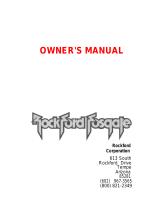 Rockford Fosgate POWER 1000 MOSFET Owner's manual
Rockford Fosgate POWER 1000 MOSFET Owner's manual
-
 Rockford Fosgate Power BD1000.1 Operation & Installation
Rockford Fosgate Power BD1000.1 Operation & Installation
-
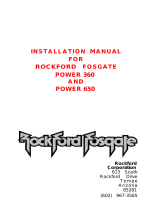 Rockford Fosgate Power 360 Installation guide
Rockford Fosgate Power 360 Installation guide
-
 Rockford Fosgate Punch 30 Installation guide
Rockford Fosgate Punch 30 Installation guide
-
 Rockford Fosgate Power II Installation guide
Rockford Fosgate Power II Installation guide
-
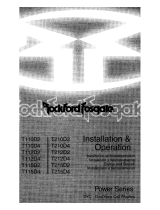 Rockford Fosgate T212D2 Installation & Operation Manual
Rockford Fosgate T212D2 Installation & Operation Manual
-
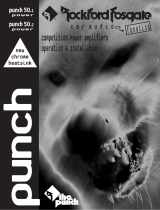 Rockford Fosgate 50.2 User manual
Rockford Fosgate 50.2 User manual
-
 Rockford Fosgate 4-CHANNEL AMPLIFIER User manual
Rockford Fosgate 4-CHANNEL AMPLIFIER User manual
-
Diamond Audio Technology Power 250.2 User manual
-
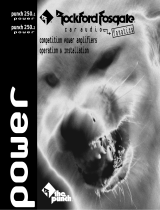 Rockford Fosgate Power 250.2 User manual
Rockford Fosgate Power 250.2 User manual
Other documents
-
Cougar C600-4 Datasheet
-
Cougar C500-2 Datasheet
-
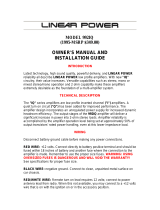 Linear Power 992IQ Owner's Manual And Installation Manual
Linear Power 992IQ Owner's Manual And Installation Manual
-
Power Acoustik 4DS.400 User manual
-
Rockville Phenom RXA-T1 Owner's manual
-
Rockville DB15 Owner's manual
-
Soundstream SST-PXW-12T Datasheet
-
Cadence United Olympia User manual
-
Rockville RXM-S6 Owner's manual
-
Cadence QRS Q6000m Owner's manual






































